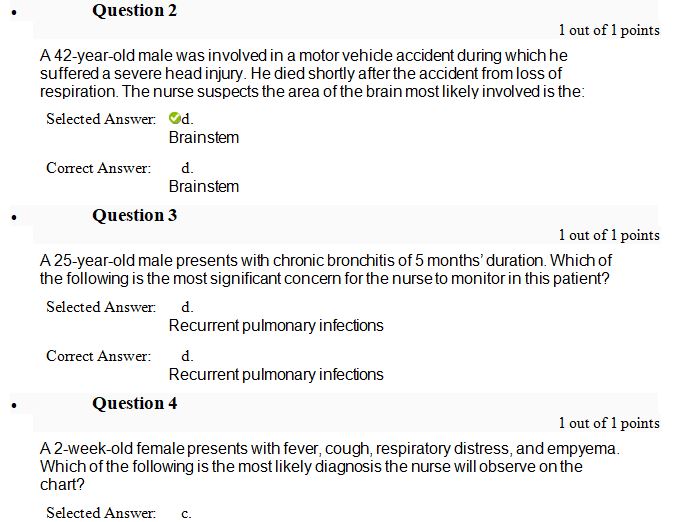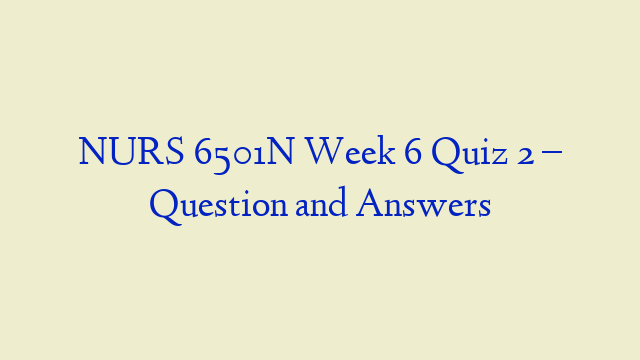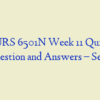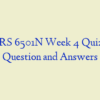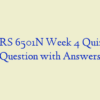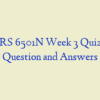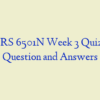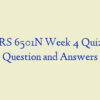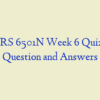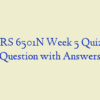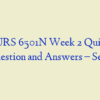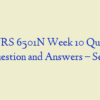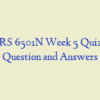Description
NURS 6501N Week 6 Quiz – Question and Answers
- A 42-year-old male was involved in a motor vehicle accident during which he suffered a severe head injury. He died shortly after the accident from loss of respiration. The nurse suspects the area of the brain most likely involved is the:
- A 25-year-old male presents with chronic bronchitis of 5 months’ duration. Which of the following is the most significant concern for the nurse to monitor in this patient?
- A 2-week-old female presents with fever, cough, respiratory distress, and empyema. Which of the following is the most likely diagnosis the nurse will observe on the chart?
- A 22-year-old female presents with chronic bronchitis. Tests reveal closure of the airway during expiration. While planning care, a nurse recalls this condition is most likely caused by:
- A 57-year-old male presents with cough, sputum production, dyspnea, and decreased lung volume. He is diagnosed with pneumoconiosis. When taking the patient’s history, which finding is the most probable cause of his illness?
- A 30-year-old female received a severe head injury in a motor vehicle accident. She is now experiencing respiratory abnormalities characterized by alternating periods of deep and shallow breathing with periods of apnea. What term should the nurse use when charting this condition?
- A 50-year-old diabetic male did not take his medication and is now in metabolic acidosis. He is experiencing Kussmaul respirations. What type of breathing will the nurse observe upon assessment?
- A 47-year-old male is …..with pulmonary edema. Which assessment findings will the nurse observe?
- A nurse is preparing to teach the staff about asthma. Which information should the nurse include? Airway hyper-responsiveness in asthma is related to:
- A 28-year-old male reports to his primary care provider that he has had a cold for a week and is coughing up bloody secretions. When giving report, what term should the nurse use to describe this condition?
- A 65-year-old female with emphysema presents to the ER for difficulty breathing. Physical exam reveals bluish skin and mucous membranes. How should the nurse chart this condition? Patient has:
- A 20-year-old male is in acute pain. An arterial blood gas reveals decreased carbon dioxide (CO2) levels. Which of the following does the nurse suspect is the most likely cause?
- An 11-year-old female presents with a low-grade fever and cough. She is diagnosed with atypical pneumonia. What type of pneumonia does the nurse suspect the patient is experiencing?
- A 60-year-old female with emphysema is having difficulty expiring a given volume of air. When giving report, the nurse will relay that the patient is most likely experiencing _____ pulmonary disease.
- A 60-year-old female with a 25-year history of smoking is diagnosed with emphysema. She has an increased anterior-posterior chest diameter. The nurse attributes this finding to:
- A nurse is teaching staff about pulmonary edema. Which information should the nurse include? The most common cause of pulmonary edema is nurs 6501n week 6 quiz
- A 10-year-old female develops pneumonia. Physical exam reveals subcostal and intercostal retractions. She reports that breathing is difficult and she feels she cannot get enough air. What term should the nurse use to document this condition?
- A 7-month-old male presents with cystic fibrosis (CF) accompanied by failure to thrive and frequent, loose, and oily stools. Sweat testing reveals increased chloride. Which of the following should the nurse observe for that would accompany this disease?
- If an individual with respiratory difficulty were retaining too much carbon dioxide, which of the following compensatory responses would the nurse expect to be initiated?
- While planning care for a child with asthma, which of the following is characteristic of asthma?
- When the pulmonologist discusses the condition in which a series of alveoli in the left lower lobe receive adequate ventilation but do not have adequate perfusion, which statement indicates the nurse understands this condition? When this occurs in a patient it is …..nurs 6501n week 6 quiz
- A 26-year-old female recently underwent surgery and is now experiencing dyspnea, cough, fever, and leukocytosis. Tests reveal that she has a collapsed lung caused by removal of air from obstructed alveoli. What condition will the nurse observe on the chart? 24. A nurse is reviewing the results of an ABG and finds reduced oxygenation of arterial blood. What term should the nurse use to describe this condition?
- When the nurse observes a diagnosis of nosocomial pneumonia, the patient generally acquires this pneumonia:
- Individuals with a recent diagnosis of emphysema should be assessed for which most common presenting factor?
- A 50-year-old male presents with hypotension, hypoxemia, and tracheal deviation to the left. Tests reveal that the air pressure in the pleural cavity exceeds barometric pressure in the atmosphere. Based upon these assessment findings, what does the nurse suspect the patient is experiencing?
- While reviewing lab results, to help confirm a diagnosis of cystic fibrosis in a 1-year-old child which substance will be present in the child’s sweat?
- A 13-year-old female is ….with asthma. Which of the following should the nurse teach the patient to recognize as part of an asthmatic attack?
- A geneticist is discussing cystic fibrosis (CF). Which information should be …..? CF is an _____ disease.
- A 9-year-old male contracted influenza. Which of the following complications is of greatest concern to the nurse?
